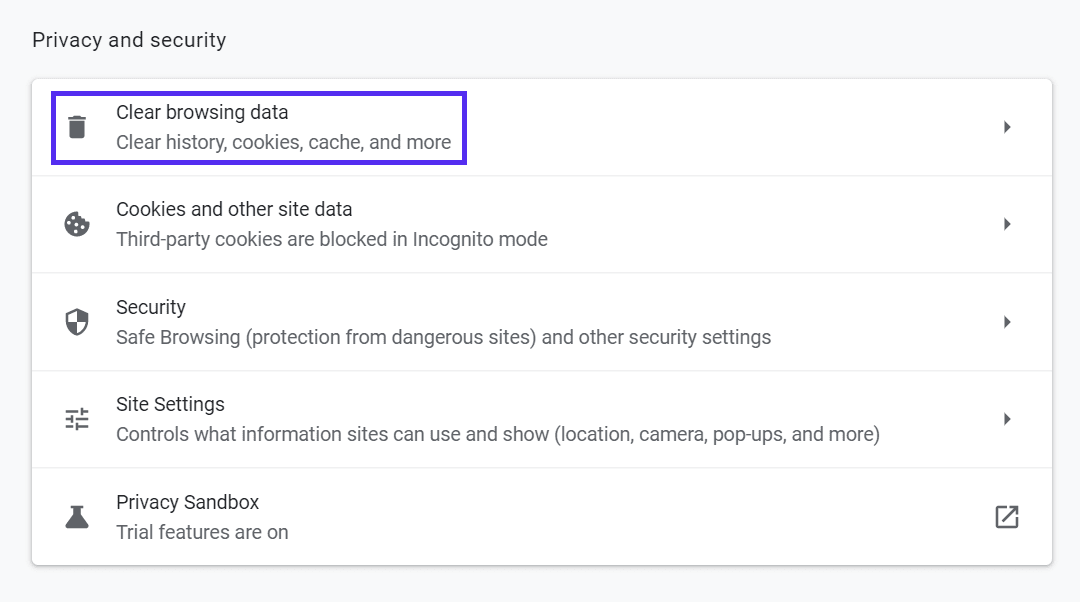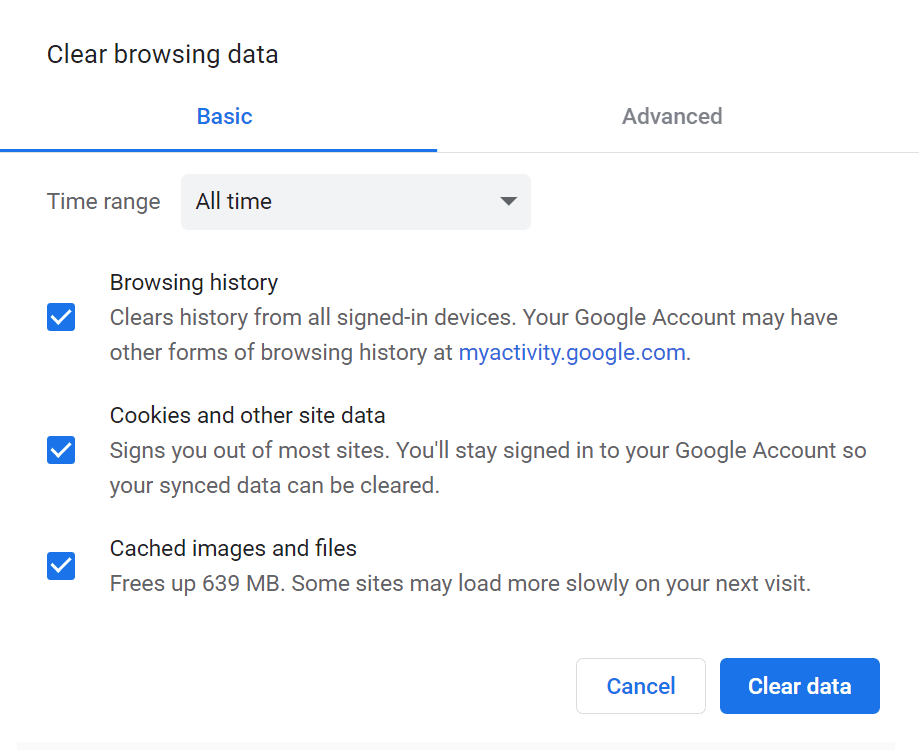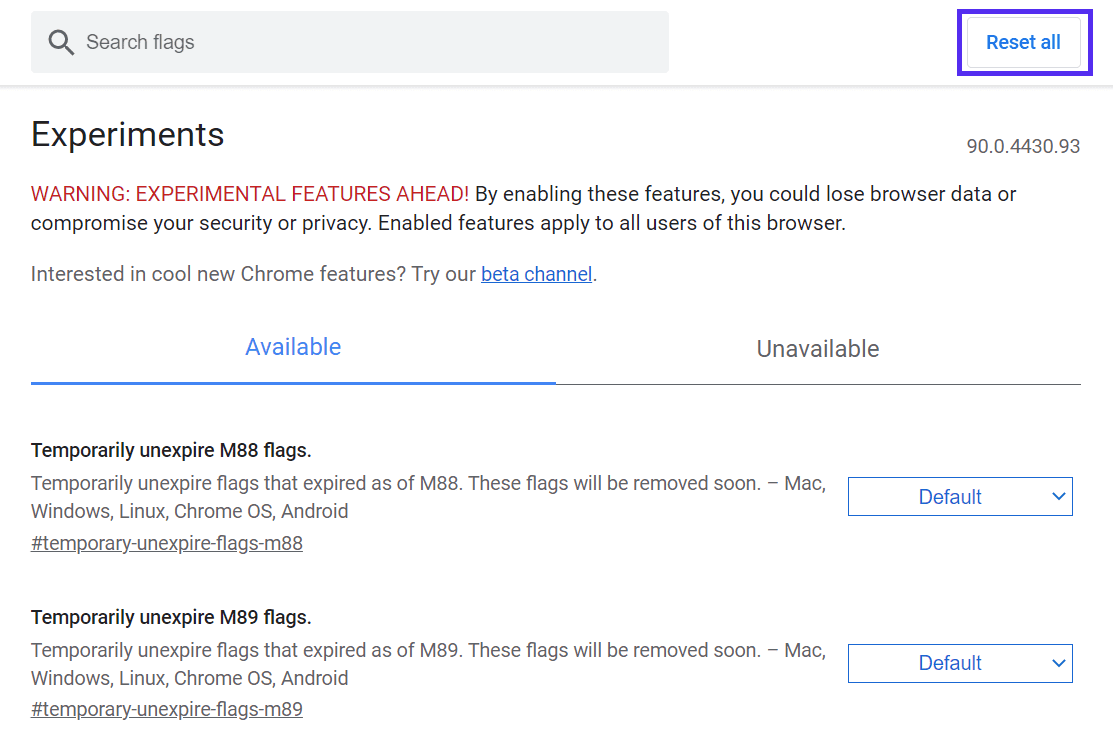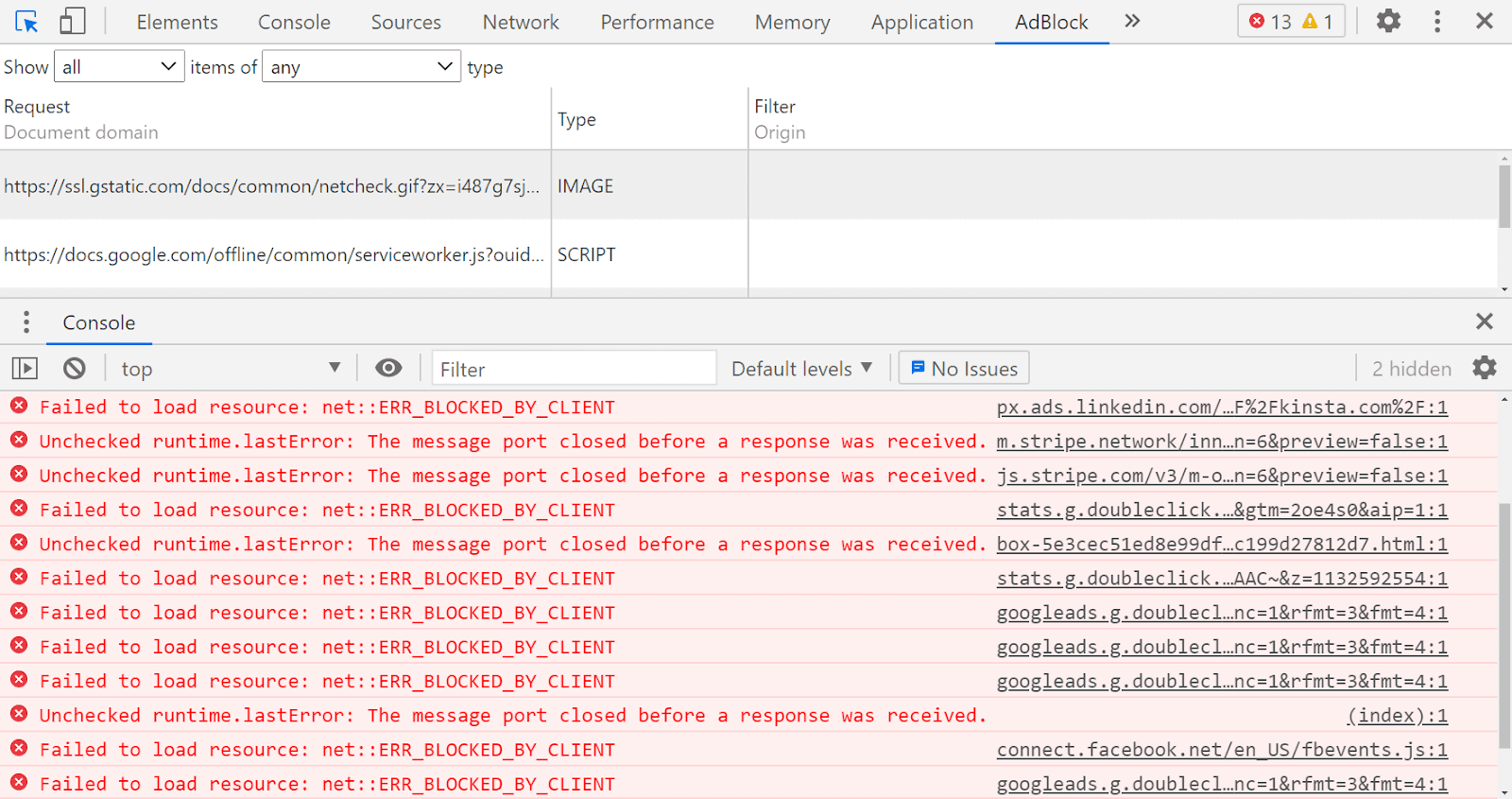Most people are used to the occasional computer glitch. However, if you’re facing off against an “ERR_BLOCKED_BY_CLIENT” error, you might not know what your next steps should be. Several different issues can cause this problem, making troubleshooting it a challenge.
Fortunately, there’s a way to avoid confusion. By understanding all the possible solutions to this error, you can quickly resolve the issue with minimal friction.
In this article, we’ll cover why you might be seeing the “ERR_BLOCKED_BY_CLIENT” error. Then we’ll go over four methods to help you remedy the problem.
Let’s dive in!
Check Out Our Guide to Fixing the “Failed To Load Resource: net::ERR_BLOCKED_BY_CLIENT” Error
Why You Might See the “Failed to Load Resource” Error
While the message “ERR_BLOCKED_BY_CLIENT” is common, this may not be the exact text that you see:

You might see a variation such as:
- “failed to load resource: net::ERR_BLOCKED_BY_CLIENT”
- “chrome failed to load resource: net::ERR_BLOCKED_BY_CLIENT”
Alternatively, the message could be app- or plugin-specific, such as:
- “woocommerce failed to load resource: net::ERR_BLOCKED_BY_CLIENT”
You may also see this error on popular sites such as YouTube and Facebook. Regardless of the error notification’s wording, the effect is often the same: you’re unable to view part of a page.
Facing this can undeniably be frustrating. Nevertheless, the error message can clue you into the cause. As such, you might be able to solve errors like this one more quickly than other issues that cause content not to show correctly.
Occasionally, the “failed to load resource” error is the result of a missing server file. A URL typo might also cause it. More commonly, however, a browser extension has blocked a request.
Ad blockers and other content moderators can interfere with regular parts of a webpage. These tools work by searching a site for specific words and patterns. Any similarities can mean that your files get caught up in the blocklist.
Fortunately, there are a few ways to prevent this.
How to Fix the “Failed to Load Resource: net::ERR_BLOCKED_BY_CLIENT” Error
If you’ve encountered this error, don’t worry! Below are four methods you can use to resolve it.
We recommend that you work your way through each solution in turn. If one doesn’t fix the problem, you can try the next.
1. Reset Your Browser to the Default Settings
We’ll start with a common issue: your browser. Some browsers have settings that can interfere with specific resources showing. As such, you might want to begin by resetting a few of those options. Note that this method will also disable extensions such as ad blockers that may be causing the issue.
A common culprit in Google Chrome is the cache. To reset your Chrome cache, open up the browser. Navigate to your Chrome settings by entering “chrome://settings/” in the address bar. Then scroll down to find the section titled Privacy and security, and select Clear browsing data:

The browser will take you to a screen with several options. Make sure the time range is All time and that all three options are selected. Once you’re ready, click Clear data:

After you’ve cleared your cache, this might reset any options that were producing the error. Check the page in question to see if the resource is now displaying correctly. If not, you can also try resetting Chrome flags.
Chrome flags are experimental features for the browser — most are off by default. However, you may still be using a few because they can extend functionality.
To reset your flags, enter “chrome://flags/”into your address bar. You can either disable them one by one or just click Reset all in the upper-right corner:

You can also follow similar steps to clear the cache on all major browsers. After you’ve finished the process, relaunch your browser and try to view the resource again. If it still isn’t showing up, you can move on to the following method.
2. Rename Any Problematic Files
Another method for solving this issue is going straight to the source. If a moderation extension is blocking your content, it may be because of its filename. Therefore, you’ll want to try re-uploading your assets with different names.
Users are unlikely to deactivate their ad blockers, so this is often a direct way to fix the problem. Start by looking for any file names that include advertising-related terms. It can consist of words such as “ad,” “advertising,” or “promotion.”
If you locate titles like this, consider using post-relevant keywords in their place. For example, a post analyzing a new piece of software should have that software’s name in the image title. In addition to helping prevent an incorrect block, this can also boost your pages’ rankings.
3. Debug Your Page Using an Ad Blocker
Third-party tools may be the reason for the “ERR_BLOCKED_BY_CLIENT” error, but they may also be the solution. Many users choose to take advantage of productivity-boosting Chrome extensions, which often come with helpful debugging features.
We’ll use Adblock Plus for this walkthrough, as it’s a popular option. While we’re using this tool to demonstrate the steps via Chrome, note that you can also use it for Mozilla Firefox with a Firefox extension and other major browsers.
To get started, navigate to the page that you’d like to debug. Next, right-click anywhere on the page and select Inspect. Then click on the AdBlock tab in the upper right:

You’ll be taken to an inspect page that focuses on AdBlock’s operations. You can scroll down the console to see all instances of the “failed to load resource” error:

From here, you can review each error and see if there’s a pattern. In the above example, many of the “ERR_BLOCKED_BY_CLIENT” messages are due to Google Ads.
Once you see a pattern, you can determine how to avoid a block. For example, you can make a note of those terms and prevent them in the future.
You can use this knowledge to rename or repost your resources. It’s essential for filenames that are not closely related to advertisements.
4. Allowlist the Website (If You’re a Visitor)
Finally, you may not own the site that you’re having trouble accessing. If this is the case, you can “allowlist” the site in question to ensure that all content displays correctly.
To do so, navigate to your Adblock Plus settings page. From the left-hand menu, select Customize, and scroll down to find the option to Stop blocking ads:

Here, you can enter the name of the website you’d like to visit into the box and click on OK! to add it to the allowlist. However, consider that doing so will turn off all ad blocking for that page or site.
If you find the “ERR_BLOCKED_BY_CLIENT” error on another website, you may want to reach out to the owners and let them know. You’re probably not the only one seeing the message, and any of the above actions will only solve the problem for you. Alerting the site can help address the root cause.
Summary
Most error messages are unwelcome sights. They indicate that something has gone wrong and typically interrupts your browsing. Fortunately, you can solve the “failed to load resource: net:: ERR_BLOCKED_BY_CLIENT” error by adjusting a few settings.
In this article, you’ve learned four methods for resolving this pressing browsing issue:
- Reset your browser options to their default settings.
- Rename files that contain terms related to advertising in their titles.
- Use an ad blocker such as Adblock Plus to debug the page.
- Allowlist the site you’d like to visit.
Do you have any questions about troubleshooting the “ERR_BLOCKED_BY_CLIENT” error? Let us know in the comments section below!


